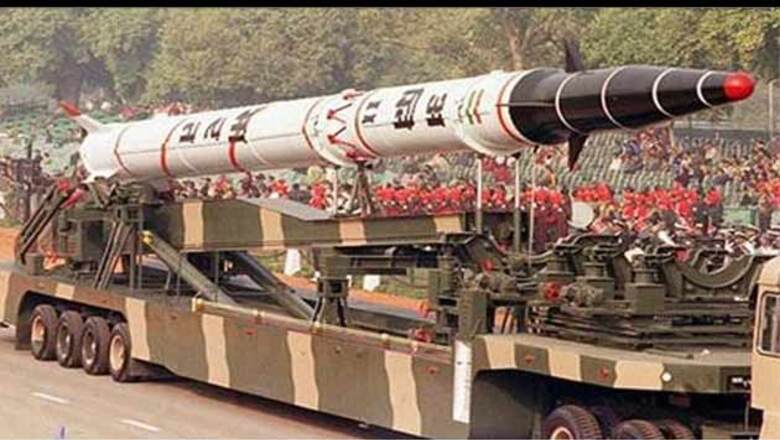
views
New Delhi: With only 80-100 nuclear warheads as opposed to China's 240 and Pakistan's 90-110, India's military preparedness is not upto the mark. A report by the Bulletin of Atomic Scientists says that India's missile force too is lagging behind both Pakistan and China. The report also points out that despite being operational, the 700-km range Agni-I and Agni-II, capable of hitting targets upto 2000 kms, are unreliable.
According to the Bulletin of Atomic Scientists a majority of India's missiles like Agni-III, IV and V are still under development. India had successfully tested its latest nuclear capable surface-to-surface Inter-Continental Ballistic Missile (ICBM) missile Agni-V in April. Agni-V with 5000-km range and capable of carrying multiple nuclear warheads catapulted India into an extremely select club of countries possessing such a deadly weapons platform.
Although Agni-V along with nuclear attack submarine the Akula II class Nerpa rechristened INS Chakra and Sukhoi-30 MKI air superiority fighter give India the much-needed muscle and a strong deterrence against its nuclear-armed adversaries, but both Pakistan and China are way ahead in the arms race. But Agni-V will need several more tests to be declared operational.
The bulk of the Indian ballistic missile force consists of three versions of Prithvi missiles, but only one of these versions, the Army's Prithvi I, has a nuclear role. Given its small size (9 meters long and 1 meter in diameter), the Prithvi I is difficult to spot on satellite images, and therefore little is known about its deployment locations. The Prithvi I is a short-range missile (up to 150 kms) and is the mainstay of the Strategic Forces Command, according to the Bulletin of Atomic Scientists.
The induction of INS Chakra, the impending sea trials of the indigenous nuclear submarine INS Arihant that will be armed with torpedoes and the 700-km range nuclear K-15 submarine-launched ballistic missiles, the shortlisting of the Rafale for Indian Air Force’s (IAF) 126 Medium Multi-Role Combat Aircraft (MMRCA), induction of two squadrons of the front-line Sukhoi-30 MKI fighter jets in the North East at the Tezpur and the Chabua air bases are just some of the moves the government and defence forces have taken to counter the Chinese threat.
India will have an assured second strike capability once Agni-V and INS Arihant become operational as the country has already a declared policy of no first use of nuclear weapons. INS Arihant will complete the crucial third leg of nuclear triad as a nuclear-powered submarine can stay underwater for a very long duration, remain undetected and file a submarine launched nuclear missile.













Comments
0 comment